Introduction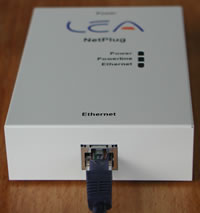 There’s a growing reliance and expectance of networks in the home to handle all of this digitised media that we want to chuck around our homes, from room to room.
There’s a growing reliance and expectance of networks in the home to handle all of this digitised media that we want to chuck around our homes, from room to room.
Many houses that were constructed recently, or depending on the country you live in, within the last three years, are network cabled with Cat5+. The majority of us who live in houses over three years old find they have a problem.
WiFi has helped many, but many houses in Europe have walls of considerable thickness, and without regular repeaters, WiFi can struggle to provide complete coverage.
Usually beyond that there the idea of retro fitting of Cat5 cabling to a house. Given the level of mess created, this usually doesn’t go down too well with the neater partner in a relationship.
Power Line Communication (PLC) has been designed to fill this gap in the market. PLC uses an adaptors that plugs into the houses main circuit and the network, using the house’s power cabling and the network cabling.
You may think that plugging your computer into the mains power by unconventional means is just asking for trouble. People used to think that electric washing machines were a bad idea as ‘electrics and water do not mix’. However, PLC has been around for some time now in the form of narrow band, and since the year 2000 a broadband communication channel has been available.
LEA Universal NetPlug
We’ve had our hands on the LEA Universal NetPlug for a while and ran it on trial for a while.
I installed two LEA NetPlug devices, one on my work computer upstairs and the other on my entertainment computer downstairs. The work computer is running Ubuntu Linux and the other, Microsoft Windows.
 What’s involved in getting the network setup? Basically nothing. Take the power lead, plug it into one end of the NetPlug. The Ethernet (RJ45) goes in the other end.
What’s involved in getting the network setup? Basically nothing. Take the power lead, plug it into one end of the NetPlug. The Ethernet (RJ45) goes in the other end.
With the second computer connected with the same 2-minute setup, you’re able to communicated between them, if they’re network software is setup.
If you’re OK running without encryption, then that’s all you need to do – no software required.
The only time you need to resort to using software is configuring the encryption. This uses 56 bit-DES encryption, which provides reasonable protection from those who aren’t paranoid about been snooped on.
Up to 16 NetPlug’s can be used on the same network.
The NetPlug is based on HomePlug v1.0.1 standard and they report a raw data speed of upto 14Mbps. These speeds are fine for most home computing needs including Web-browsing activity (your DSL connection is likely to be considerably slower than this anyway).
Testing
I checked to see if both computers had Internet access and could share files. They did and could, without any set-up programs or reconfiguration. They just worked.
There are some who say that vacuum cleaners interfere with PLC signal, so I did some cleaning in the vicinity of both computers, I even plugged the vacuum cleaner next to the PLC device. There was no notable lose in connection speeds.
Benefits
It is a lot faster to plug a device into a wall than it is to lay a single cable. It creates an instant network at the flick of a mains switch. The real benefit will come to people who use mobile networks such as LAN (Local Area Network) party goers. These people have to build a multi-computer network before the party even starts. Bring a PLC device and abolish trailing cables.
Comparison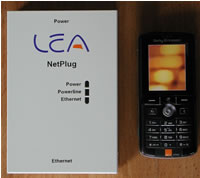 There are different ways of creating a computer network. A traditional wired network is the cheapest but takes the longest time to set-up, unless you do not mind trailing cables. PLC devices cost more but are the quickest to set-up, and do not require any new cables. Wireless networks are the most expensive but can take less time to set-up than a traditional wired network, and offer out of doors networking.
There are different ways of creating a computer network. A traditional wired network is the cheapest but takes the longest time to set-up, unless you do not mind trailing cables. PLC devices cost more but are the quickest to set-up, and do not require any new cables. Wireless networks are the most expensive but can take less time to set-up than a traditional wired network, and offer out of doors networking.
Conclusion
The LEA Universal NetPlug device is firmly positioned between traditional wired networking and wireless networking – in the cost and ease of set-up stakes. If you want a quick and easy way to set-up a network and do not need out of doors networking, the LEA Universal NetPlug device will do the job.
The styling isn’t going to get you excited, but over time, we’d imagine that PLC devices are going to become more ‘home friendly’, probably incorporated into the plug. In January 2006, LEA released a home-focued version of this – it’s smaller and looks a lot better.
Score 92%
+ve: Anyone can use it. Setup near instant. No problems running.
-ve: Styling could be slicker. Encryption setup only on Windows.
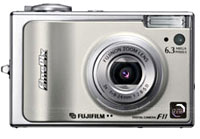 We raved about the auto-everything Fujifilm F10, so when we heard that they were producing an updated version of the camera offering more manual controls, we were happy to dust off the chequebook and place an order.
We raved about the auto-everything Fujifilm F10, so when we heard that they were producing an updated version of the camera offering more manual controls, we were happy to dust off the chequebook and place an order. We remain impressed with the results, with the high ISO rating letting us capture natural-looking images where other cameras would be reaching for the flash or crumbling into a noisy mess.
We remain impressed with the results, with the high ISO rating letting us capture natural-looking images where other cameras would be reaching for the flash or crumbling into a noisy mess.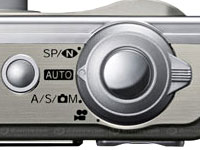 With no new dedicated controls to control aperture and shutter settings, exposures had to be adjusted through a rather clunky interface that involved doubling up the main four-way controller and central MENU/OK buttons – not always without confusion.
With no new dedicated controls to control aperture and shutter settings, exposures had to be adjusted through a rather clunky interface that involved doubling up the main four-way controller and central MENU/OK buttons – not always without confusion.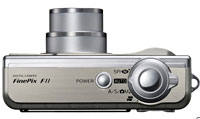 For folks seeking a simple, all round point and shoot camera, the F10 remains our first choice, but for photographers keen to take advantage of Fuji’s outstanding low light abilities with the ability to control exposure manually, the F11 is well worth the extra £30 or so.
For folks seeking a simple, all round point and shoot camera, the F10 remains our first choice, but for photographers keen to take advantage of Fuji’s outstanding low light abilities with the ability to control exposure manually, the F11 is well worth the extra £30 or so.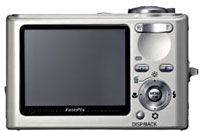 Shutter speed 3 – 1/2000 th sec
Shutter speed 3 – 1/2000 th sec After many years of trotting around town with pockets stuffed full of a Palm PDA and a mobile phone, we decide that an all-in-one PDA/smartphone combo would be the best way to reduce our ostentatious trouser bulge.
After many years of trotting around town with pockets stuffed full of a Palm PDA and a mobile phone, we decide that an all-in-one PDA/smartphone combo would be the best way to reduce our ostentatious trouser bulge. The left hand side sports the camera button, volume control and voice memo switch, none of which are particularly well placed (it’s all too easy to fire off the voice memo/camera switched when turning the handset on).
The left hand side sports the camera button, volume control and voice memo switch, none of which are particularly well placed (it’s all too easy to fire off the voice memo/camera switched when turning the handset on).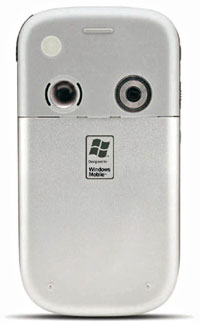 Performance
Performance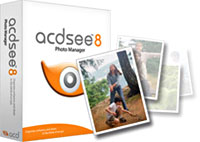 A heady mix of ever plummeting digicam prices, larger memory card capacities and more capacious hard drives means that it’s easy to end up with photos and videos scattered to the four corners of your PC, making it nigh on impossible to find your pictures.
A heady mix of ever plummeting digicam prices, larger memory card capacities and more capacious hard drives means that it’s easy to end up with photos and videos scattered to the four corners of your PC, making it nigh on impossible to find your pictures. A start-up screen gives new users an overview of features to help them get started while upgraders will be glad to see the program sticking to the tried and trusted three-paned interface, coupled with a useful ‘image basket’ function.
A start-up screen gives new users an overview of features to help them get started while upgraders will be glad to see the program sticking to the tried and trusted three-paned interface, coupled with a useful ‘image basket’ function. Unlike many other image management programs, you don’t have to ‘import’ images into the program before they can be viewed, so the program also doubles up as an excellent image file browser.
Unlike many other image management programs, you don’t have to ‘import’ images into the program before they can be viewed, so the program also doubles up as an excellent image file browser. At times, the sheer weight of features can prove a little overwhelming to new users, but for keen photographers keen to keep a vice-like grip on their growing photo collections and looking for a strong, all-round image management solution, we strongly recommend ACDSee.
At times, the sheer weight of features can prove a little overwhelming to new users, but for keen photographers keen to keep a vice-like grip on their growing photo collections and looking for a strong, all-round image management solution, we strongly recommend ACDSee.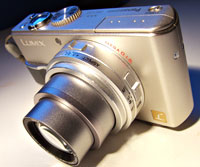 With a high-end feature set offering auto, scene, aperture and shutter priority modes plus full manual exposure controls, Panasonic’s beautifully sculpted 8 megapixel LX1 is clearly aimed at the discerning photographer who knows their ISO from their f-stop.
With a high-end feature set offering auto, scene, aperture and shutter priority modes plus full manual exposure controls, Panasonic’s beautifully sculpted 8 megapixel LX1 is clearly aimed at the discerning photographer who knows their ISO from their f-stop.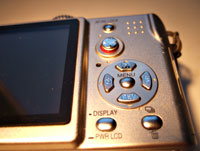 On most compact digcams, exposure adjustments are invariably achieved by fiddly excursions through endless sub-menus, but the LX1’s design affords fast, direct access to a host of vital functions like ISO rating, shutter speed, aperture and file size/quality – essential for those looking to capture the ‘decisive moment’.
On most compact digcams, exposure adjustments are invariably achieved by fiddly excursions through endless sub-menus, but the LX1’s design affords fast, direct access to a host of vital functions like ISO rating, shutter speed, aperture and file size/quality – essential for those looking to capture the ‘decisive moment’.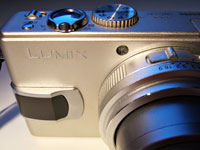 Although some cameras mimic a 16:9 shooting ratio by cropping off the top and bottom of the picture, the LX1 has a true 16:9 sensor, with users able to switch formats via a handy switch on the lens barrel (no sub-menu burrowing needed).
Although some cameras mimic a 16:9 shooting ratio by cropping off the top and bottom of the picture, the LX1 has a true 16:9 sensor, with users able to switch formats via a handy switch on the lens barrel (no sub-menu burrowing needed).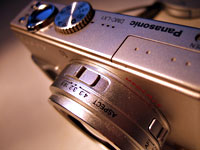 Camera controls
Camera controls Photographic modes
Photographic modes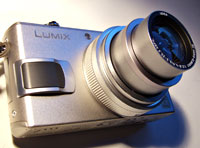 Of course, the capable image stabilisation goes some way to compensate for these serious shortcomings, allowing handheld longer exposures at low ISO ratings, but that’s going to be a dead loss if you’re trying to freeze action in low light.
Of course, the capable image stabilisation goes some way to compensate for these serious shortcomings, allowing handheld longer exposures at low ISO ratings, but that’s going to be a dead loss if you’re trying to freeze action in low light. Conclusion
Conclusion The full title of the book, “Ending Spam: Bayesian Content Filtering and the Art of Statistical Language Classification,” gives you a pretty strong indication that this book is going to provide a depth of information.
The full title of the book, “Ending Spam: Bayesian Content Filtering and the Art of Statistical Language Classification,” gives you a pretty strong indication that this book is going to provide a depth of information. The appendix (Shining Examples of Filtering) explains some of the programs out there, how they work and interviews with the authors.
The appendix (Shining Examples of Filtering) explains some of the programs out there, how they work and interviews with the authors.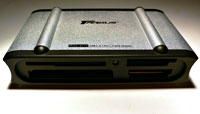 As your collection of digital devices grows, you’ll probably find it near-impossible to stick with just the one memory card format as the pesky things keep on changing.
As your collection of digital devices grows, you’ll probably find it near-impossible to stick with just the one memory card format as the pesky things keep on changing.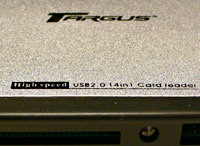 Getting data off these various cards usually means a trip to the back of the PC to install the various cables that came with all your camera/smartphone etc (when will they standardise all the ruddy USB connecters?!).
Getting data off these various cards usually means a trip to the back of the PC to install the various cables that came with all your camera/smartphone etc (when will they standardise all the ruddy USB connecters?!).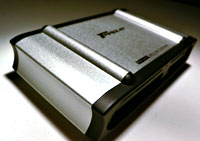 With most memory card readers offering support for a huge variety of memory cards, all you need to take on the road is a single USB lead to connect the card reader to your laptop and you’re sorted!
With most memory card readers offering support for a huge variety of memory cards, all you need to take on the road is a single USB lead to connect the card reader to your laptop and you’re sorted! We were sadly guilty of leaving the charger for our Nikon N70 back in Blighty during out recent jaunt to NYC, and after seeing the battery levels accelerating downwards as we transferred zillions of images to our laptop, we shelled out for a cheap’n’cheerful Targus card reader, the TG-CRD14 ($25 street price).
We were sadly guilty of leaving the charger for our Nikon N70 back in Blighty during out recent jaunt to NYC, and after seeing the battery levels accelerating downwards as we transferred zillions of images to our laptop, we shelled out for a cheap’n’cheerful Targus card reader, the TG-CRD14 ($25 street price). This book covers the Mac OS X 10.4 (aka Tiger) for geeks who have come from a Unix/Linux environment and are happiest using the command line, not sexy GUIs (graphical user environments).
This book covers the Mac OS X 10.4 (aka Tiger) for geeks who have come from a Unix/Linux environment and are happiest using the command line, not sexy GUIs (graphical user environments).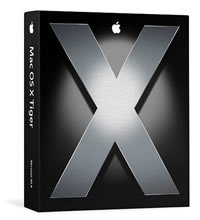 Bits like the section of PearPC might be a bit over the top for even a normal Unix user, but it does work. If you just want to develop Mac OS programs, this could be a way to do it – although it will be slowly as the emulator isn’t very fastest.
Bits like the section of PearPC might be a bit over the top for even a normal Unix user, but it does work. If you just want to develop Mac OS programs, this could be a way to do it – although it will be slowly as the emulator isn’t very fastest.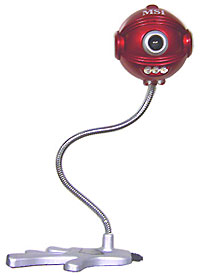 When we saw MSI’s feature packed StarCam 370i knocking out for a mere £15 online ($26, €22), we thought it would make an ideal replacement for our elderly (and somewhat battle-weary) Sony cam, currently gazing out over the delights of Brixton.
When we saw MSI’s feature packed StarCam 370i knocking out for a mere £15 online ($26, €22), we thought it would make an ideal replacement for our elderly (and somewhat battle-weary) Sony cam, currently gazing out over the delights of Brixton.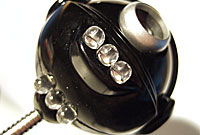 A rudimentary software control panel lets users fiddle about with image/video parameters (gamma, brightness, contrast etc), and budding Jean-Luc Godard’s can select the black and white option for arty scenes.
A rudimentary software control panel lets users fiddle about with image/video parameters (gamma, brightness, contrast etc), and budding Jean-Luc Godard’s can select the black and white option for arty scenes.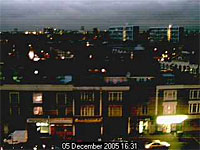 The cam also features a built in microphone which was, as you might expect, fairly basic and lo-fi, but good enough for Internet calls.
The cam also features a built in microphone which was, as you might expect, fairly basic and lo-fi, but good enough for Internet calls.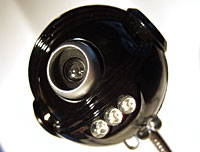 We can, however, recommend it for anyone looking for a basic, cheap as chips Webcam for video chats with friends and relatives.
We can, however, recommend it for anyone looking for a basic, cheap as chips Webcam for video chats with friends and relatives. They may look like something a WW2 pilot would have strapped on to their heads before going off for a dogfight, but the Grado SR60s are, quite simply, the best headphones in their price bracket – and higher.
They may look like something a WW2 pilot would have strapped on to their heads before going off for a dogfight, but the Grado SR60s are, quite simply, the best headphones in their price bracket – and higher.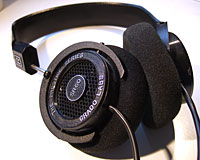 Untroubled by the vagaries of fashion, Grado’s hand-made SR60s have a refreshing no-nonsense look about them.
Untroubled by the vagaries of fashion, Grado’s hand-made SR60s have a refreshing no-nonsense look about them. The driver units are covered by black supra-aural foam ear pads, with an unusually thick cable coming from each earpiece, stethoscope-style.
The driver units are covered by black supra-aural foam ear pads, with an unusually thick cable coming from each earpiece, stethoscope-style.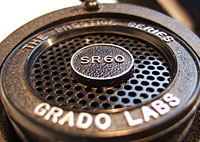 Sonically, they’re a revelation. The sound is full-bodied, fast and articulate with a solid bass performance creating an impressively spacious soundstage.
Sonically, they’re a revelation. The sound is full-bodied, fast and articulate with a solid bass performance creating an impressively spacious soundstage. The clarity and depth of these phones is unheard of at this price level – stick on a pair of trendy designer “DJ” headphones after a session on the Grados and it’ll sound like listening to a transistor radio.
The clarity and depth of these phones is unheard of at this price level – stick on a pair of trendy designer “DJ” headphones after a session on the Grados and it’ll sound like listening to a transistor radio.